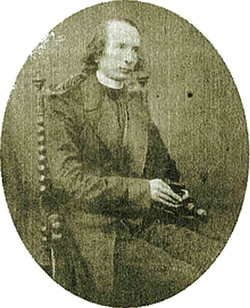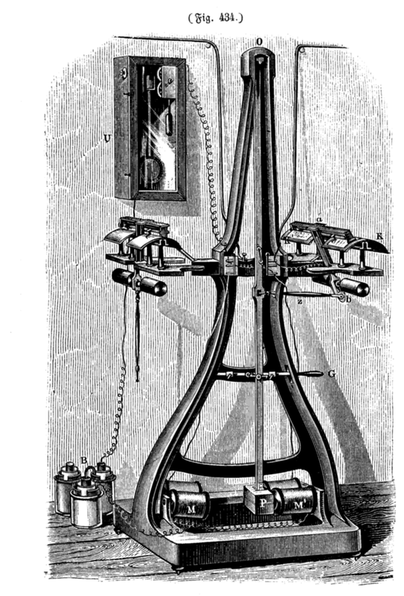 I remember when I got my first fax machine in the 1980s. It was slow, but became essential in my studio, as art directors started using them to send layout revisions. What a time saver. Who knew that the fax... or facimile... or telefax was really invented back in 1863 by Giovanni Caselli, an Italian priest! Caselli invented his device thirty years before Bell invented the telephone and actually put it into commercial use by contract with the French government. Caselli was seen as a mad scientist rather than a man of the cloth by his friends and neighbors, with odd mechanical devices mixed among his furniture. Born 1815 in Siena, Caselli studied both theological and scientific studies. While the wired telegraph was already sending coded messages, sending pictures by wire was only a dream at the time. Caselli's idea was his pantelegraph, an concept first thought of by Alexander Bain of Scotland in 1840. Bain created a crude device to send pictures over wire, but never fully developed the idea. Living in Florence at the time (while hiding out from his political enemies) Caselli reworked Bain’s device and improved on it, but he didn't have enough mechanical skills to make a working prototype. So he went to Paris and partnered with Gustav Froment, a leading maker of scientific instruments. After seven years in 1863, they triumphed. Caselli received a U.S. patent for his telegraphic apparatus, making major improvements to the design. Unlike Bain's design which scratched the image on metal plates, Caselli's fax used ordinary ink. The image received could be enlarged or reduced. Multiple messages could be transmitted through a single wire at the same time. Caselli also developed an electrically sensitive paper, soaked in potassium, that changed color each time electricity passed through it. His fax machine was more than six feet tall, with long pendulums, batteries, and wires. For the 1860s, the quality of the fax image was amazingly high. Eventually, he would dub it the pantelegraph. Emperor Napoleon III liked the device so much they passed a law to connect a fax service between Paris and Lyons. In 1861 the French government authorized tests of a fax system using telegraph lines between Paris and Lille and Paris and Marseilles. By 1863 a Paris-Lyons line was tested with great success. Transmitting at fifteen words per minute, the fax could send forty telegrams of twenty words each hour. In 1865 the French government decided to take the system public. On May 16, 1865, the pantelegraph was set up on the existing Paris-Lyons telegraph line. It must have worked well because in two years, the Marseilles connection was added. By 1867 four Caselli machines serviced the Paris-Lyons lines. Service was so successful and the device so efficient that 110 faxes and hour could be sent. The newspaper industry, seeing what a boon it could be for their industry, touted the new invention on their pages. Interestingly, early fax machines needed to "talk" to machines of the same brand and model and it wasn't until 1974 that the world's first international fax standard was approved by the United Nations. In the 1980s, personal and small business fax machines proliferated around the world. And to think, we own it all to an eccentric Italian priest. --Jerry Finzi If you found this post interesting, please pass it along on your favorite Social Media site. Grazie!
0 Comments
Your comment will be posted after it is approved.
Leave a Reply. |
Categories
All
Archive
June 2024
|



 RSS Feed
RSS Feed
